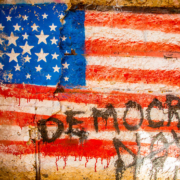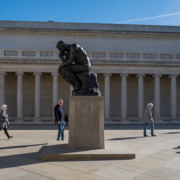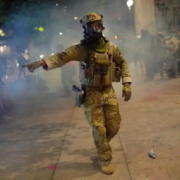Appreciating Turk’s POLITICAL CRIMINALITY: THE DEFIANCE AND DEFENSE OF AUTHORITY
Among my favorite nonfiction scholarly books is Austin T. Turk’s Political Criminality (1982). This volume presents a well thought out analysis of why individuals resort to crimes against states (and other similar entities) and how they respond. At its core, it is an exploration of power dynamics, with a focus on political deviance and the state’s response to threats to authority.
Turk, one of my undergraduate and graduate student mentors, was a deep thinker and proflic writer. He had an important influence on my ideas about political crime, and was the author of the foreword to my Controlling State Crime (1995/2000).
Political Criminality, like Gurr’s Why Men Rebel, is one of the primary works that shaped my understanding of how to construct explanations of political crime, and it served as the inspiration for my Dynamics of Political Crime (2002) and An Introduction to Political Crime. (2012).
More about the book.
Political Criminality—like Turk’s earlier work, Criminality and Legal Order (1969)—synthesizes a vast array of scholarship on criminology, political violence, and conflict, bringing these strands of thought together into a meaningful and cohesive whole.
Political Criminality, consists of five well-sourced chapters, and in addition to its deep theoretical content, Turk’s writing remains remarkably accessible. He sought to provide a “general introductory analysis” of the relationship between political criminality and political policing, but his work goes far beyond an introductory overview. At its heart, Turk’s conflict theory of political crime is concerned with the relative power between competing actors. As Turk asserts, “Having power in a social relationship means having some relative control over the resources available to persons in that relationship” (p. 14). This central tenet of his theory is critical for understanding how the law and criminal justice system are employed to maintain social control and political power.
One of the most compelling aspects of Political Criminality is Turk’s examination of how states use legal systems to criminalize certain actions as a means of maintaining authority and suppressing dissent. He explores how these laws shape public opinion regarding dissenters and so-called lawbreakers. In doing so, Turk touches on a wide range of political conflicts, from assassinations to wars, offering a comprehensive look at the many forms political defiance can take. He was one of the first scholars to delve deeply into how states strategically employ the criminal justice system to reinforce power structures and suppress challenges to authority.
However, despite the groundbreaking nature of his work, few of the tenants of Political Criminality have been empirically tested. This could be due in part to the interdisciplinary nature of Turk’s theory, which spans the fields of criminology, political science, and sociology. The lack of empirical attention might also reflect a broader trend in academic scholarship, where interdisciplinary theories sometimes fall between the cracks of disciplinary boundaries.
Even though empirical testing is lacking, Turk’s work remains highly relevant, particularly given the current global political climate, where activists struggle for attention and power, and states continue to use legal mechanisms to suppress dissent and maintain control. Political Criminality offers a timeless framework for understanding the complex interplay between power, law, and crime.
The book is an important cornerstone of my approach to scholarship. Turk’s ability to synthesize a large body of scholarship into a cohesive and accessible explanation is something I have strived to emulate in my own work. Though the book may not have garnered the empirical attention it deserves, its intellectual rigor and interdisciplinary approach ensure that it remains a crucial text for anyone studying political crime and state power.












